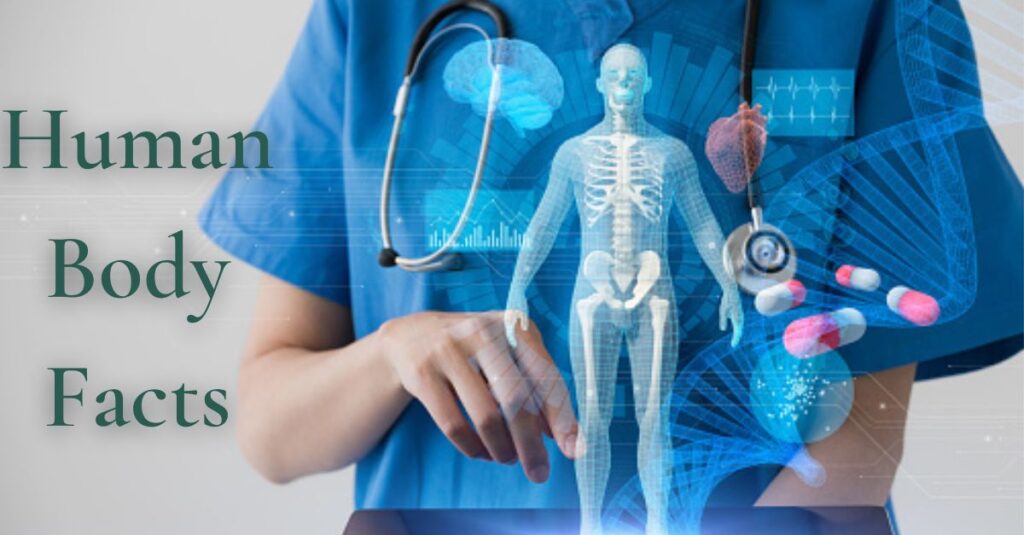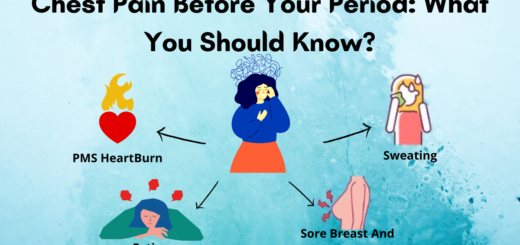10 Surprising Facts About Your Own Body

There’s a lot going on beneath the surface of our human bodies, and science continuously reveals new and startling facts about them. These interesting facts about the human body, ranging from DNA to hormones, will blow your mind.
- The human nose can detect over 1 trillion different scents.
Yes, that’s correct! The human nose is an extremely sensitive organ capable of detecting a wide range of various scents. Our sense of smell is also closely linked to our memories, emotions, and behaviors, and it plays a role in many aspects of our daily lives.
The presence of specialized cells called olfactory receptors allows the human nose to sense smells. These receptors, which are found in a tiny patch of tissue in the top section of the nasal cavity, are in charge of sensing and identifying various scents. When we breathe in, molecules from the scents in the surroundings attach to these receptors, starting a chain of chemical reactions that transmit signals to the brain. These impulses are subsequently processed by the brain and interpreted as unique scents.
- The surface area of a human lung is about the same as a tennis court.
It is estimated that the surface area of a human lung is about the same as a tennis court. The large surface area of the lungs allows for a large amount of oxygen to be absorbed into the bloodstream and a large amount of carbon dioxide to be removed. This is significant because carbon dioxide is a waste product that needs to be eliminated and oxygen is required for the body’s cells to function correctly. The alveolar walls are only one cell thick, making it easy for oxygen and carbon dioxide to pass through, which further improves the efficiency of this exchange.
- The human eye can distinguish between over 10 million different colors.
The human eye is a remarkable organ capable of detecting and differentiating between a wide range of colors. More than any other animal, the human eye is said to be able to discriminate between more than 10 million different colors.
The capacity to perceive different colors is enabled by specialized cells in the retina called cones and rods, which are responsible for detecting light and color. Cones are more color sensitive and responsible for providing detailed, colorful vision. Our ability to see fine details and colors is enhanced by these cells, which are most active in strong light. On the other hand, rods are more sensitive to low light and are what give us black-and-white vision.
The human eye can distinguish between different colors because it can detect distinct wavelengths of light. The eye is capable of recognizing and differentiating between these various wavelengths of light, which correspond to various colors. This enables us to view the world in all its vibrant beauty!
- The average person has about 100,000 hairs on their head.
The average person has about 100,000 hairs on their head, but the exact number can vary greatly from person to person. The density of hair on the scalp can range from about 50 to over 100 hairs per square centimeter. Some people have more hair than others due to genetics, age, and other factors.
Hair is made up of a protein called keratin, and it grows from hair follicles located in the dermis (the middle layer of the skin). The average person has about 100,000 hair follicles on their scalp, but not all of these follicles are actively producing hair at any given time.
Hair grows in cycles, with each hair follicle going through a growth phase (anagen) followed by a resting phase (telogen) and a shedding phase (catagen). At any given time, about 85-90% of the hair on the scalp is in the anagen phase, while the remaining 10-15% is in the telogen phase. The hair in the telogen phase will eventually fall out and be replaced by new hair in the anagen phase.
The amount of hair on the scalp can be influenced by a variety of factors, including genetics, hormones, age, and overall health. Some people may experience hair loss or thinning due to conditions such as male or female pattern baldness, alopecia, or other medical conditions.
- The human brain is capable of generating more electrical impulses in a single day than all the telephones in the world combined.
The human brain is indeed a complex and amazing organ, and it is responsible for controlling all of the body’s functions, including movement, sensation, thought, and emotion. It is also capable of generating a significant amount of electrical activity, but it is not accurate to say that it generates more electrical impulses in a single day than all the telephones in the world combined.
The brain generates a variety of different brain waves depending on the level of alertness and activity. For example, during deep sleep, the brain generates slow, high-amplitude brain waves known as delta waves. During periods of wakefulness and alertness, the brain generates faster, lower-amplitude brain waves known as alpha and beta waves.
Although the brain generates a significant amount of electrical activity, it is not accurate to compare this to the number of electrical impulses generated by telephones. Telephones use electrical signals to transmit and receive information over a network, while the brain uses electrical signals to communicate internally and control the body’s functions. The two are not directly comparable.
- The human body contains enough water to fill a four-liter bottle.
The amount of water in the human body varies depending on a person’s size, age, and overall health, but it is generally less than four liters.
On average, the human body is about 60% water by weight. This means that a person weighing around 70 kilograms (154 pounds) would contain about 42 liters of water. However, this water is distributed throughout the body and is not all found in a single location.
Water is an essential component of the human body and plays a vital role in many of its functions. It is used to transport nutrients and oxygen to cells, remove waste and toxins from the body, and regulate body temperature. The body needs a certain amount of water to function properly, and it is important to drink enough fluids to maintain proper hydration.
It is worth noting that the amount of water in the human body can change over time. For example, people can lose water through sweating, urination, and other processes, and it is important to replace this lost water to maintain proper hydration. On the other hand, people can also gain water by consuming fluids or certain foods that are high in water content.
- The average person sheds about 1.5 pounds of skin per year.
The outer layer of the skin, known as the epidermis, is constantly shedding dead skin cells and replacing them with new ones. This process helps to keep the skin healthy and functioning properly.
The process of shedding skin cells is known as desquamation, and it is a normal and important part of maintaining healthy skin. Dead skin cells are constantly being replaced by new cells that are produced in the lower layers of the epidermis. As the new cells move up to the surface of the skin, they push the older, dead cells off of the body.
The amount of skin a person sheds can be influenced by various factors, including age, hormones, and overall health. Some people may shed skin cells more quickly or more slowly than others due to these and other factors.
- The human heart pumps enough blood in a single day to fill a tanker truck.
The human heart is an impressive and vital organ, and it is responsible for pumping blood throughout the body. The heart pumps a significant amount of blood each day, but it is not accurate to say that it pumps enough blood to fill a tanker truck.
The human heart can pump about 5 liters of blood per minute, and it beats about 100,000 times per day. This means that over the course of a day, the heart pumps about 7,200 liters of blood. However, this is still a far cry from the capacity of a tanker truck, which can hold tens of thousands of liters of liquid.
The blood pumped by the heart circulates through the body’s arteries and veins, delivering oxygen and nutrients to the body’s cells and tissues and removing waste products. The heart is a vital organ that is essential for maintaining the body’s functions and overall health.
It is worth noting that the amount of blood pumped by the heart can vary depending on a person’s size, age, and overall health. Some people may have a larger or smaller heart, and this can affect the amount of blood the heart pumps. In general, however, the human heart cannot pump enough blood to fill a tanker truck in a single day.
- The average person has about 100,000 miles of blood vessels in their body, which is enough to go around the earth four times.
The human body has an extensive network of blood vessels, including arteries, veins, and capillaries, which carry blood throughout the body. This vast network of blood vessels plays a vital role in transporting oxygen and nutrients to the body’s cells and tissues and removing waste products from the body.
- The human tongue is the strongest muscle in the body in proportion to its size.
The tongue is a strong and adaptable muscle in the human body. Our ability to speak, swallow and taste the food is made possible by a variety of muscles that work in harmony. The tongue’s distinct structure and the power of the muscles that make it up allow it to carry out a variety of tasks despite its small size. In fact, the tongue is a muscle that is so powerful that it can lift things that are heavier than the head and move in a variety of directions, making it an extremely versatile muscle.




